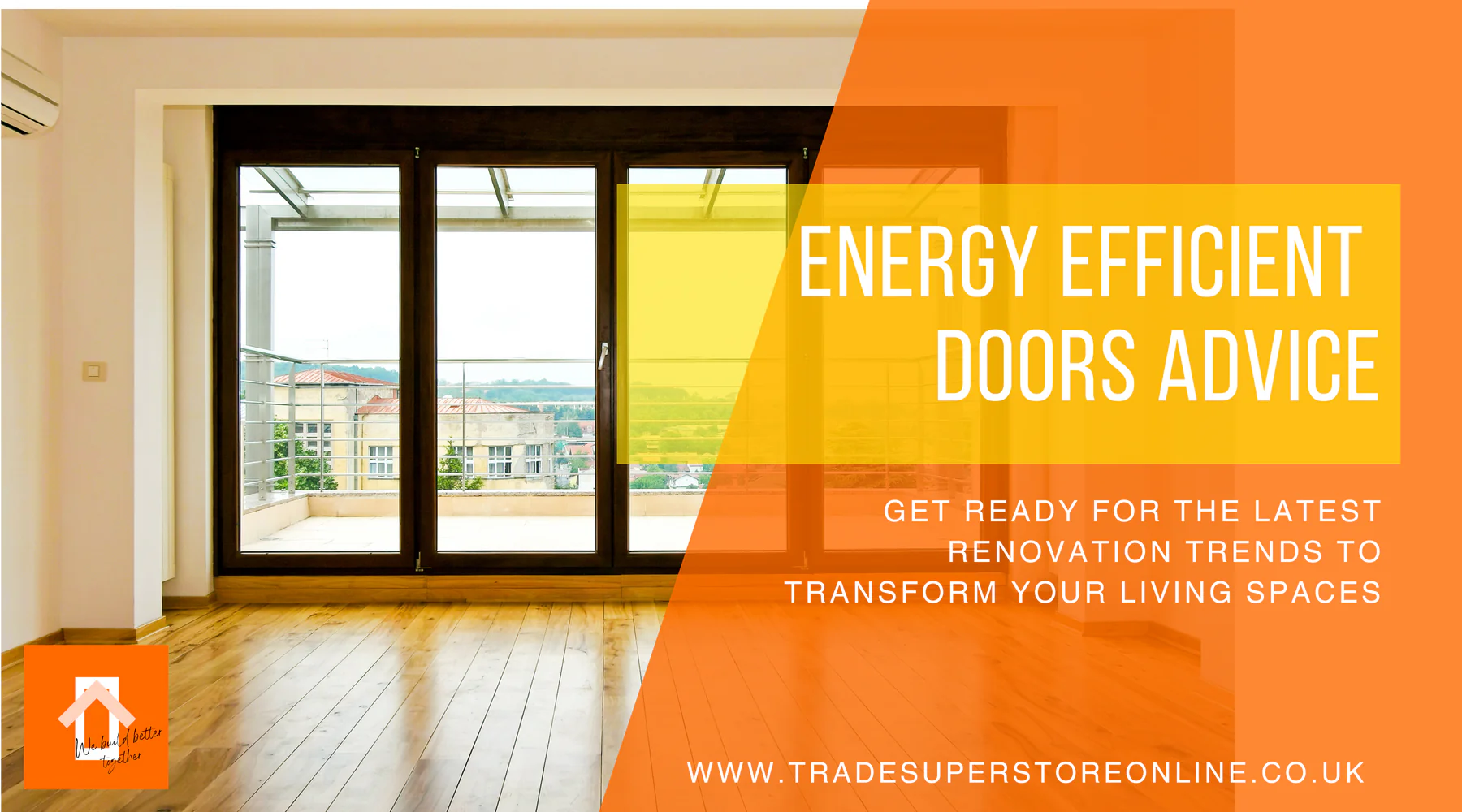
Energy Efficient Doors Advice
When it comes to upgrading your home, investing in energy efficient doors is one of the smartest decisions you can make. Not only do they enhance comfort and aesthetics, but they also contribute to lower energy bills and a reduced carbon footprint. Before diving into the world of glazed doors and energy efficient interior doors, let’s explore what you need to know and consider for your home improvement project.

Understanding Your Needs
Before purchasing new energy efficient doors, it’s essential to:
- Assess Your Home’s Requirements: Identify whether you need exterior or interior doors, and consider how these upgrades will integrate with your home's design.
- Set a Budget: Determine a realistic budget, keeping in mind that high-performance doors are an investment.
- Explore Cost-Effective Alternatives: Evaluate whether insulating other areas like walls and lofts could address your energy efficiency goals more effectively. Studies show that up to 60% of heat can be lost through poorly insulated walls and roofs, which may be worth addressing before replacing windows and doors.
High-Performance Energy Efficient External Doors
Modern energy efficient external doors are designed to minimize heat loss while adding style and security to your home. These doors feature tighter frames and integrated insulation, making your home warmer in winter and cooler in summer.
Types of Energy Efficient External Doors
- Solid Doors: Perfect for enhanced privacy and security.
- Fully or Partially Glazed Doors: Offer a blend of light and energy efficiency.
- Materials: Choose from aluminium, uPVC, timber, or composite designs depending on your style and durability needs.
Key Considerations
- Glazing Options: Decide between double and triple glazing. While triple glazing is more energy efficient, it can slightly reduce natural light.
- Budget Range: Prices start at approximately £600 for basic designs and can go up to £5000 for premium models.
- Front Door Features: Enhance energy efficiency by fitting a letterbox plate brush or installing a solid door with a separate letterbox placement.

Energy Efficient Interior Doors for a Comfortable Home
Energy efficient interior doors play a crucial role in maintaining consistent temperatures between rooms. These doors help reduce heat transfer, making your living spaces more comfortable year-round.
U-Values and Why They Matter
When shopping for thermal insulated doors, pay attention to the U-value—a measure of thermal efficiency. The lower the U-value, the better the door is at preventing heat loss. For example, quality external doors typically have a U-value around 1.8 W/m²K.
Key Considerations
- Material Matters: Opt for thick, high-quality doors, especially in bedrooms and living areas. Timber is an excellent choice for its natural insulating properties.
- Draught-Proofing Solutions: If replacing doors isn’t feasible, consider simple fixes like keyhole covers or draught excluders to prevent heat loss.
Choosing the Right Glazed Doors for Your Home
Glazed doors, including patio and French doors, add elegance and functionality to your home while offering energy efficiency when chosen wisely.
French Doors
French doors are among the most energy-efficient patio door options. Their smaller size reduces the amount of heat escaping through the glass, especially when installed on a south-facing wall to maximize sunlight.
Tips for French Doors:
- Enhance thermal performance with heavy curtains or blinds.
- Address draughts with rubber seals around the edges.
Sliding Doors
While sliding doors are less energy efficient than French doors, their tight seals provide excellent draught protection, making them ideal for rooms with hardwood floors or minimal carpeting.

Additional Tips for Energy Efficient Home Improvement
- Regular Maintenance: Check seals, hinges, and frames regularly to maintain efficiency.
- DIY Improvements: Add weather stripping or insulation kits to existing doors to boost performance.
- Maximize Natural Light: Use glazed doors strategically to let in sunlight while maintaining insulation.
Final Thoughts
Investing in energy efficient doors, whether they’re external or interior, is a key step in any home improvement project. With options ranging from glazed doors to insulated internal doors, you can find solutions tailored to your needs and budget. By focusing on U-values, materials, and proper maintenance, you can enhance your home’s comfort while saving on energy costs.
Upgrade your doors today and take a step closer to a more energy-efficient, comfortable home!
